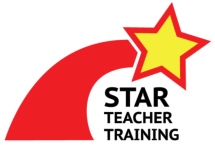I love ESL listening activities that I can use over and over with all sorts of levels, topics, grammar, and numbers of students. They save a ton of time on prep and students love them even more as they grow familiar with them. A prime example of this is Bingo. This game is incredibly flexible and popular with both students and teachers. It’s also great for involving everyone at the same time.
Related Post: Increasing ESL Participation Rates
How to Play Bingo For ESL Listening

Materials:
- Bingo papers with a blank 3×3 grid
- pencils or pens
- A common list of words (9 or more) to play with
Basic Order:
- Play this ESL activity after you’ve elicited, taught, and boarded the target vocabulary and grammar.
- Chest and explain the game.
- Students write one word from the common list into each of the boxes in their bingo grid (9 words for a 3×3 grid).
- Randomly announce the words from the list for students to listen and tick.
- Students shout out “Bingo” once they’ve made a complete diagonal, vertical, or horizontal line.
- Give the first students a hi-five, thumbs up, or other reward for winning.
- Play until several students have won.
Related Post: Give ESL Instructions Successfully with Chesting
Tips for Adapting Bingo
The glory of this ESL listening activity is in how easily adaptable it is.
Students’ Choice: Students choose where to write the words from the list, so their cards end up being pretty random. The more words you include in the list then the longer it will take students to get a bingo (12 is a good number). Give students a time limit, usually about one or two minutes, to write their words.
Multiple Rounds: You can play multiple rounds with a single bingo paper. Write “Game 1, 2, 3” on the board. Tell students in Game 1 they’ll make ticks (checks), in Game 2 they’ll make circles, and in Game 3 they’ll make crosses (Xs). The students can’t get Bingo with a mix of ticks, circles, or crosses. This way you can easily play multiple rounds with students.

Make it Level Appropriate: You can use Bingo with all sorts of levels, topics, and language. Here are some examples;
- Simple: just say the words individually
- “monkey”
- “pencil”
- “hamburger”
- “library” etc.
- Sentence: use the words in a sentence
- “It’s a monkey”
- “I have a yellow pencil”
- “I like hamburgers”
- “You can borrow and read books at the library.”
- Description: describe the meaning of the word
- “It has a tail and it can climb trees quickly. It likes bananas.”
- “It’s long and thin. You can write with it and erase mistakes.”
- “It’s a popular food. It has bread, meat, lettuce, tomato and ketchup. I like to eat it at…”
- “This place has lots of books for you to read and borrow. You must be quiet here.”
- Spelling Dictation: spell out the words for students
- “m.o.n.k.e.y.”
Extra ESL Listening Tips
No Prizes: You don’t need to give material rewards to students with a Bingo. A thumbs up (where culturally appropriate), high-five, or other verbal praise is usually enough. I only specifically praise the first few students to get Bingo. In large classes you can quickly get bogged down praising/rewarding each student.
Instruction Checking: It’s worthwhile to ask a couple ICQs before playing Bingo. For example, draw some ticks in your grid on the board and ask which make a bingo. Later, add some circles and ask if they make a bingo with the ticks. Students should say “no” to a bingo with both ticks and circles.
Team Communication: You can increase the level of English chatter by putting students in pairs or small groups. They’ll help each other and automatically repeat words after you’ve called them out.
Age Appropriate: This game is best for students who are fairly confident writers. It takes a really long time for young students who are still learning to write. They also often just write the words in the order they see them in the list. I don’t recommend playing this game with 1st semester Grade 1 students. Afterwards, it depends on how advanced your classes are.
Error Check: Monitor and check students’ spelling while they write and play the game. You can discreetly point to errors for them to check and fix.
Minimax Teacher: In a pinch, you can give students a blank half-sheet of paper and have them draw their own Bingo grids.
4×4?: Some teachers prefer a 4×4 grid instead of a 3×3. This is fine, too. Though it means each game takes longer, you need a lot more vocabulary, and fewer students have a chance to get a bingo.
This game goes great as a follow-up to Battle of the Scribes.
What topics or grammar have you used Bingo for?
What other listening activities do you love to use?
Download this free Bingo template here: Bingo STT






